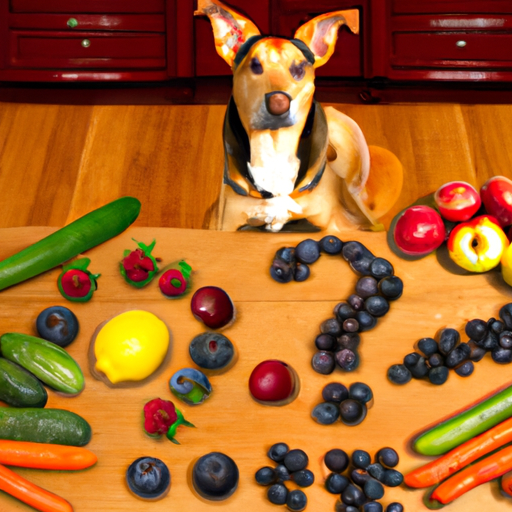As a caring and responsible dog owner, you always want to ensure your furry companion’s diet is both healthy and satisfying. Not all human foods are safe for dogs, and it’s essential to know what fruits and vegetables are permissible for their consumption. Let’s explore which fruits and vegetables are safe and beneficial for your dog’s health.
H2: Fruits Your Dogs Can Eat
Fruits are a natural source of essential nutrients that your dog may not be getting from their regular diet. Here are a few fruits that are safe for your dogs:
- Apples: Apples provide a significant source of vitamins A and C, as well as fiber. Remember to remove the seeds and core first.
- Bananas: In moderation, bananas are a great low-calorie treat for dogs. They’re high in potassium, vitamins, biotin, fiber, and copper.
- Blueberries: They are superfoods packed with antioxidants that are beneficial for dogs.
Remember, while these fruits are beneficial, they should be fed in moderation and should not constitute more than 10% of your dog’s daily caloric intake.
H2: Vegetables Your Dog Can Eat
Vegetables can be a great addition to your dog’s diet if served correctly. Here are some dog-safe vegetables:
- Carrots: Carrots are an excellent low-calorie snack that is high in fiber and beta carotene, which produces vitamin A.
- Cucumbers: For overweight dogs, cucumbers are a great way to provide a crunchy snack that is low in fats and oils.
- Green Beans: They are packed with iron and vitamins that can give your dog a nutrition boost.
| Vegetables | Benefit for Dogs |
|---|---|
| Carrots | High in fiber and beta carotene |
| Cucumbers | Low in fats and oils |
| Green Beans | Packed with iron and vitamins |
H2: Fruits and Vegetables to Avoid
Not all fruits and vegetables are safe for dogs. Some may contain substances that are toxic to dogs. Here is a list of fruits and vegetables you should avoid feeding your dog:
- Grapes and Raisins: These can cause rapid kidney failure in dogs.
- Avocado: The pit, skin and leaves of avocados contain Persin, a toxin that often causes vomiting and diarrhea in dogs.
- Onions and Garlic: These can damage your dog’s red blood cells and cause anemia.
H2: Tips for Introducing New Foods to Your Dog’s Diet
When introducing any new food into your dog’s diet, it’s important to start slowly. You don’t want to upset their stomachs or cause any unnecessary digestive discomfort. Always observe your dog after introducing new foods to notice any adverse reactions.
H2: Frequently Asked Questions (FAQs)
Q1: How much fruits and vegetables can I give my dog?
A: Fruits and vegetables should not make up more than 10% of your dog’s daily caloric intake.
Q2: Can dogs eat canned fruits and vegetables?
A: No, canned fruits and vegetables often contain added sugars, salts, and other preservatives that can be harmful to dogs.
Q3: Can I mix fruits and vegetables in my dog’s regular food?
A: Yes, you can mix them into your dog’s regular food for added flavor and nutrition.
Always remember, when in doubt, consult with a vet. Your dog’s health and well-being are paramount. With the right balance of diet and care, your canine companion will enjoy a happy, healthy life.



